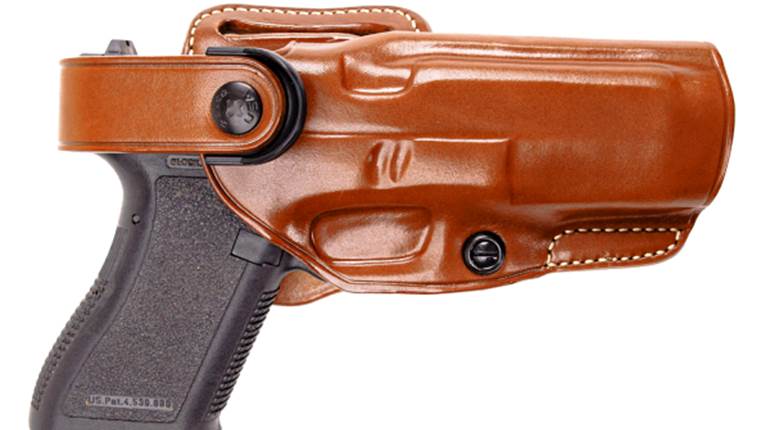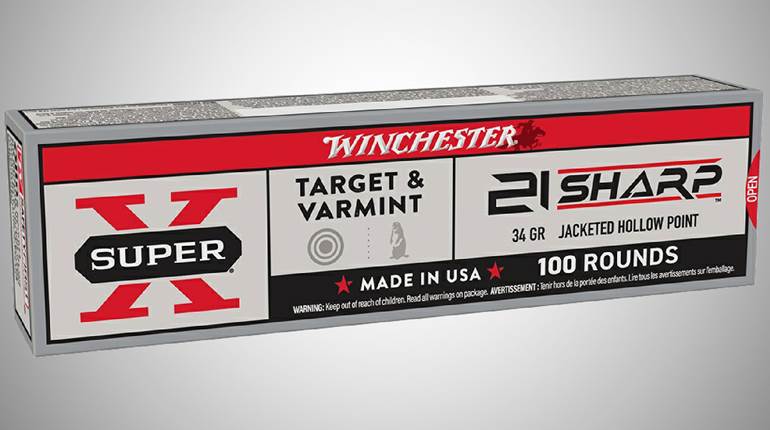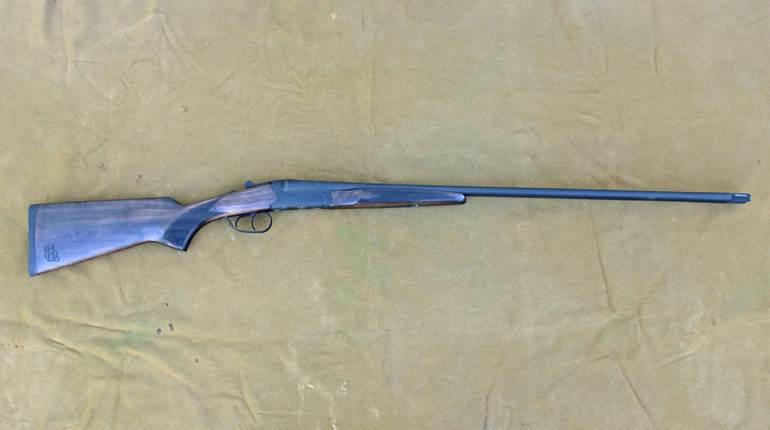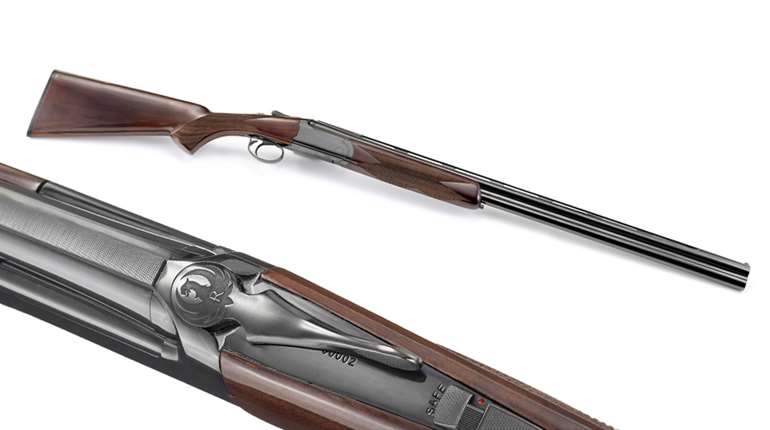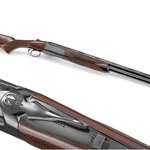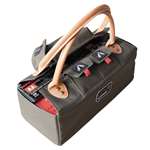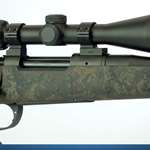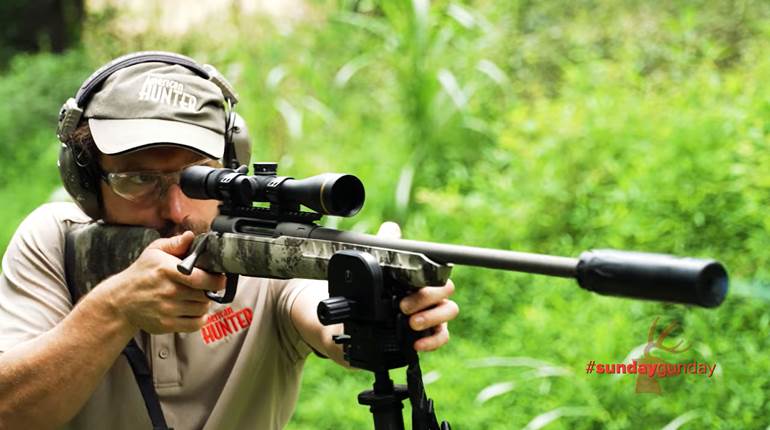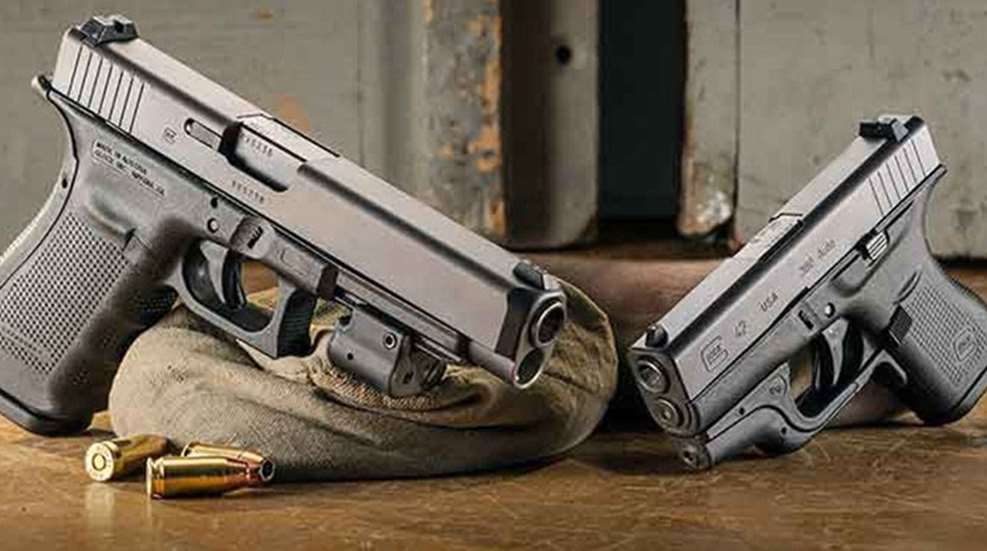
Since its inception in the early 1980s, Gaston Glock’s pistol has become firmly established as one of the premier polymer-frame, striker-fired handguns available in the marketplace. The simple, rugged and reliable semi-automatic pistols have been adopted by military, law enforcement, competition and self-defense practitioners all around the world. Last year, Glock expanded its product line with two new models that rest at opposite ends of its product size spectrum. For fans of the full-size, long-slide “practical/tactical” configuration, which has been available in 9 mm Luger and .40 S&W, Glock has introduced the G41 chambered in the popular and potent .45 ACP cartridge. Designed for convenient concealed carry, the new single-stack .380 ACP-chambered G42 represents the smallest pistol that the company has produced to date.
The Practical/Tactical Gen4 G41 .45 ACP
The G41 is a .45 ACP Safe-Action semi-automatic pistol with a full-size (Standard) Gen4 frame and an extended black gas-nitrite-finished slide. With more metal onboard from the extended slide and barrel, it makes sense that long-slide-configured pistols would weigh more than standard models. Glock has addressed this in the past—with its lengthy G34 (9 mm Luger) and G35 (.40 S&W)—by removing material via a rectangular lightening cut in the top of the slide, between the front sight and the chamber, resulting in overall weights more in line with the standard-length models.
Instead of following this pattern of stretch-and-cut slide design for the new G41, the company used a different approach. Weight was reduced by using a narrower, thinner-walled slide with external dimensions much like those of the G34, albeit a fraction of an inch longer. The result is an upper assembly with enough room for a 5.31" extended octagonal-rifled barrel, no cut-out in the top of the slide, and an overall weight that’s 2.84 ozs. lighter than the standard-size G21.
The G41 sight system employs a factory-standard polymer white-dot front sight and a polymer white-bracket rear sight containing two adjustment screws for windage. The slide features an extractor with a square protrusion that acts as both a visual and tactile loaded-chamber indicator. The recoil assembly is of the Gen4 variety, with a polymer guide rod, dual recoil springs and steel supports.
The rest of the pistol, including the trigger, frame and magazines, is lifted directly from the Gen4 version of the G21 service-size .45 ACP pistol. The smooth-faced trigger of the pistol tested required 5 lbs., 6 ozs., of force to cycle, according to a Lyman digital trigger gauge. As a Safe-Action pistol, the G41 contains the same three independent passive safeties found in other Glock models: a trigger safety, firing pin safety and drop safety.
The two-pin frame houses the takedown lever, along with the slide lock and magazine release, which are located on the left side. The enlarged magazine release button is reversible for left-handed users. A full-size molded-in Picatinny compatible accessory rail can be used to support a wide variety of light and laser modules. The pistol has textured finger grooves along the frontstrap of the grip with the Gen4 Rough Texture Frame blunted pyramids surface treatment on the backstrap and sides.
The G41 arrives in a hard case with a total of three magazines holding 13 or 10 rounds, depending on local regulations. Four interchangeable backstraps, two with beavertail grip extensions and two without, and an installation tool are also included. With no backstrap installed, the frame presents the smallest grip size, which is a 0.08" reduction in the distance to the trigger compared to the Gen3 frame. Adding one of the small (2 mm) backstraps brings the frame back to the original Gen3 size, while the installation of a larger backstrap (4 mm) adds an extra 0.08" for shooters with bigger hands.
The most notable characteristic of the G41 at the shooting range is how light and well balanced it is for a long-slide .45 ACP. With a fully loaded 13-round magazine, it feels like the gun ends at the trigger guard. In other words, it points and handles like a short-barreled pistol instead of an extended one. The trigger cycled smoothly, and the pistol ran flawlessly with test ammunition ranging from steel-cased imports to defense-grade +P hollow points.
There is one advertising point for the G41 that did not play out in the course of testing. A press release from Glock states, “The longer barrel and slide on the G41 Gen4 helps to reduce muzzle flip and felt recoil ... .” That might be true if the elongation of the G41’s upper assembly resulted in a proportional weight increase, but, as discussed, that is not the case.
With an empty magazine, the G41 tipped the scale at just 26.8 ozs. That means it actually weighs almost 3 ozs. less than a standard Gen4 G21. Since the G41 uses the same recoil assembly, and the bullets fired are gaining a little more velocity due to the 0.71" longer barrel, the lighter slide will transmit more felt recoil, not less, to the operator’s hands. In actuality, the G41’s level of felt recoil was generally on par with the G21 but in some cases it exhibited more recoil and muzzle rise. The increase was negligible, but the G41 should not be thought of as a reduced-recoil .45.
When it came to accuracy testing, the G41 proved to be a top-notch performer for an out-of-the-box pistol. The 5.31" barrel and extended sight radius kept the five-shot group averages below the 3" mark at 25 yds.
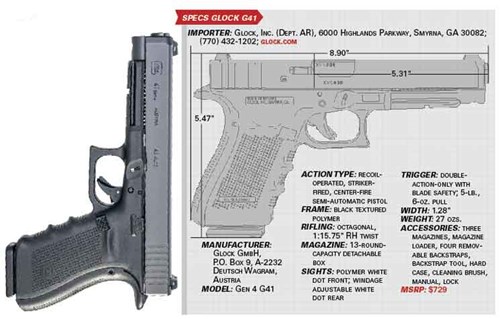
The Pocket-Size G42 .380 ACP
Shrinking an existing full-size handgun design into a pocket pistol platform is no mean feat of engineering. Many manufacturers don’t even try; rather, they often beg, borrow, or whip up a whole new design from scratch. It’s interesting to see how the features of the G42 were compressed, modified and, in some cases, left just the same as other Glock models.
Proofmarks on the slide, barrel and frame indicate that the G42 is made at Glock’s Smyrna, Ga., facility. Although it is not marketed as a Gen4 product, it takes many of its cues from the latest generation pistols. Using the same materials and processes employed in the construction of the full-size models, this little pistol is fitted with Glock’s proprietary Safe-Action trigger and internal safety systems. The G42 is 5.94" long, 4.13" high, and weighs 13.8 ozs. unloaded, making it the smallest Glock pistol to date. It is listed as being 0.94" wide but it’s only this thick near the slide lock. The rest of the frame is no more than 0.89" wide, and the slide is just 0.83" wide. The 3.25" barrel contains hexagonal rifling, which means it should not be fired with non-jacketed bullets.
The pistol exhibits a mix of unique and familiar features. The matte-black slide is topped with factory standard polymer white-dot front and white-bracket rear fixed sights. The slide lock, magazine release and takedown lever are in their expected locations and are actually the same size and shape as those found on the Gen4 pistols. However, the frame has only one pin instead of two.
The grip frame has a Gen1-style straight frontstrap, with the backstrap featuring the usual palm swell. All four sides of the grip are treated with a light version of the Rough Texture Frame grip treatment. The grip has a small, but distinctive, downward-curving beavertail to protect the shooter’s hand from the slide. The backstrap extends down below the mouth of the magazine well, nearly flush with the flat base of the drop-free, fully-metal-lined, six-round single-stack magazines. This extension makes the grip a little longer, a bit more rounded, and it protects the shooter’s palm from being abraded by the movement of the magazine base during recoil.
One notable change to the interior is an enlarged firing pin safety plunger with an irregular shape and a beveled surface. The recoil assembly is of the Gen4 variety with dual recoil springs, a polymer guide rod and steel supports in key locations.
One of the best choices the company made with the G42 was to retain the familiar trigger guard and trigger dimensions of its larger pistols. Although the trigger guard is narrower, its length, shape, finger rest and the size of its opening remain the same. The trigger itself is the same size and shape as the smooth-faced triggers used on the Gen4 pistols, with the same 0.49" travel distance. As a result, the trigger feels perfectly familiar to those who already use Glock pistols.
Specifications for the pistol indicate that it’s supposed to leave the factory with a 5-lb., 8-oz. trigger. An early version of it required 7 lbs., 3 ozs. of trigger pull to cycle, which is heavy for a Glock. Another G42 manufactured later in the year had a better trigger, with a pull weight of 6 lbs., 8 ozs., which was still heavier than listed. The trigger was good, but not quite as good as it could be.
At the shooting range, the G42 proved to be a comfortable, soft-shooting pocket pistol. Diminutive .380s tend to produce moderate to intense levels of felt recoil, with some loads becoming uncomfortable to shoot after just a few rounds. The felt recoil produced by the G42 was mild with standard-pressure full-metal-jacket and defense-type ammunition. Only when it was loaded with the hottest ammunition in the test set did it start to produce a moderate level of recoil.
Throughout the entire test, the G42 did not experience any of the traditional ammunition failures that can occur with semi-automatic pistols, such as failures to feed or extract or stove-piped cases. The only two events that could be noted as malfunctions where when the pistol’s slide locked open when firing a high-velocity load. In both cases, the chamber was clear and the next round in the magazine chambered when the slide was retracted and allowed to fall forward. This is the first time I’ve had a semi-automatic pistol go into slide lock during a test fire. But since the G42 did not lock open with any other load, it seems that the increased pressure produced by this particular load was the source of the problem.
One of the reasons the double-stack Glock sub-compacts are popular is because they are capable of producing down-range accuracy on par with the Glock Compact and Standard size pistols. The G42 did not demonstrate the same level of accuracy as the double-stack models, which was not wholly unexpected. Instead, the accuracy was in line with other pistols of the same size and caliber, such as the Ruger LC380 and the Taurus PT638 PRO SA. With targets set at 7 yds., the G42 produced group averages ranging around 1.5" to 2" in size. This is a solid level of defensive accuracy for an easy-to-carry, close-range defensive tool, which is how the G42 is intended to be used.
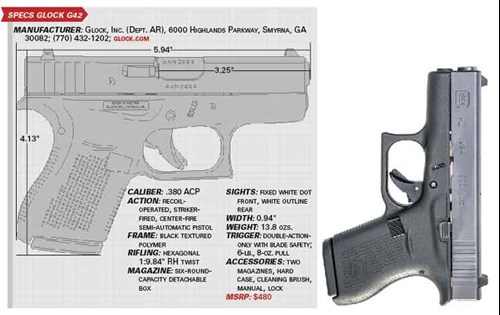
Final Thoughts
Some gun owners make the mistake of thinking that all Glock pistols are alike because they share the same color scheme and profile. In truth, the new G41 .45 ACP and the G42 .380 ACP represent Glock’s willingness to take risks and move its product line in new directions. As a hybrid pistol, blending the extended-slide design, the standard G21 frame, and Glock’s Gen4 package of features, the G41 successfully reflects the best that Glock has to offer. It’s a welcome addition for competition, on-duty use and home defense.
As for the G42, Glock was successful in shrinking its platform to satisfy a broad swath of the concealed-carry market. The Glocksters among us will feel right at home with the G42’s layout. It operates like a Glock, the trigger is the same as the double-stack pistols and it’s just as reliable as the larger models. For shooters who have not owned a Glock, the G42 is soft-shooting, easy to operate, and demonstrates a level of defensive accuracy as good (or better) as other pistols in its class. It’s an ideal concealed-carry option for new and seasoned shooters, alike.













